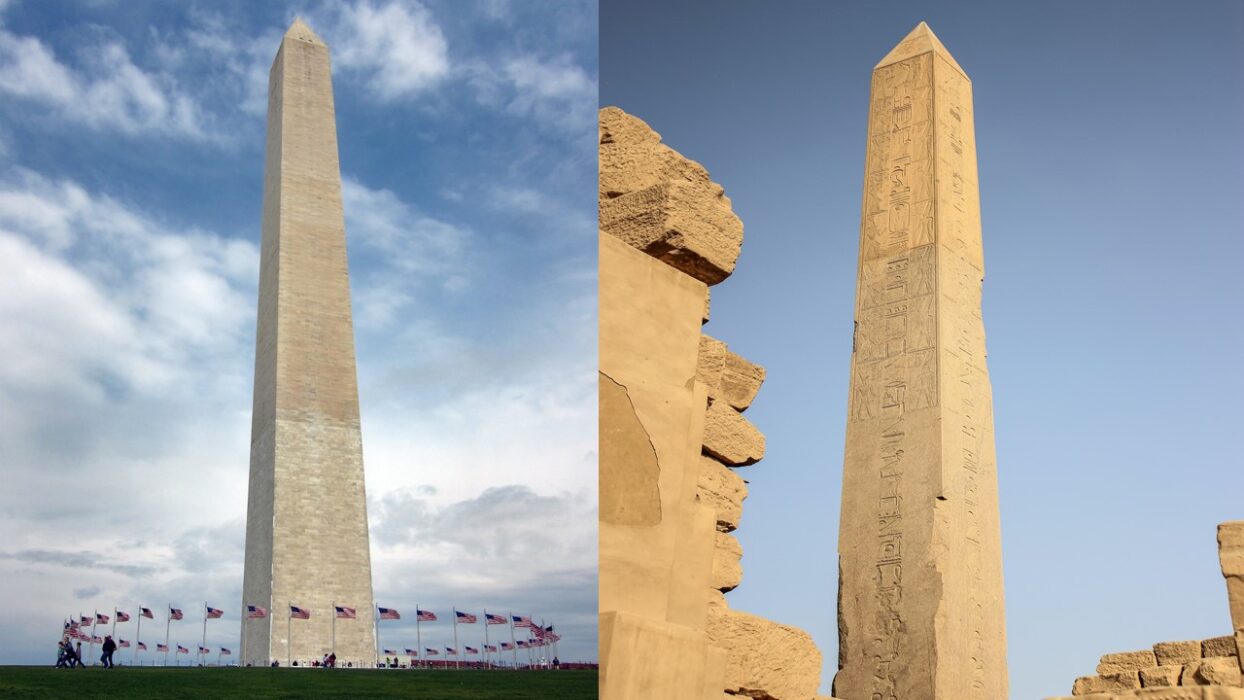In 1932, at the laying of the cornerstone of what was to become the US Supreme Court building, Chief Justice Hughes said: “The Republic endures and this is the symbol of its faith.” And faith they had needed, as it took 146 years for the US Supreme Court to have its own building. Up until then, it had resided—after moving from New York City to Philadelphia to DC—in the Capitol. But their patience was rewarded: architect Cass Gilbert created a stately structure evoking the long-enduring glory of ancient Rome, which quickly acquired the nickname the ‘Marble Palace’ or ‘Marble Temple’.
Although by then the Neoclassical architectural style was mainly selected to suit other federal buildings in DC, Gilbert and his co-workers used so many references to the ancient world, that there must have been more to it than just a preference for a fitting design.

Lady Justice as depicted on the lamp post
Exterior
Flanking the steps leading up to the oval plaza in front of the building, is a pair of impressive marble lampposts. One of them is carved with panels depicting Lady Justice, blindfolded and holding a sword and scales. The concept of Lady Justice dates to the ancient Greeks. They worshipped the goddess Themis and her daughter Dike, who both personified divine law and justice. Their attributes were the two-tray scale and sometimes a sword. This later morphed into Justitia, the goddess of Justice within Roman mythology (the blindfold was added much later).

Bronze Door (by D Ramey Logan, Wikimedia Commons)
Going up the stairs to the main west entrance flanked by Corinthian columns, the left part of the heavy bronze doors depicts law-related scenes from the ancient world matched with similar scenes from Anglo-American legal history on the right.
Located in the outside upper corners of the building are eight medallions, all showing famous lawgivers, jurists, philosophers, and advocates from ancient times: Hammurabi, Moses, Julian, Gaius, Plato, Aristoteles, Demosthenes and Cicero. And while the west pediment mostly shows Americans who had a role in the creation of the Supreme Court, the east pediment depicts ancient thinkers and lawmakers.
Interior
In the Great Hall, we find 36 Doric columns. The frieze above, borrowing from classical themes, shows animals, objects, gods and historic lawmakers, like the biblical Solomon.
In the Courtroom, behind the seats of the justices, stand 24 Ionic columns. The frieze that runs above it is a mash-up of ancient and Anglo-American persona and symbolism: Moses, Solomon, Draco and Octavian can be seen opposite of King John, Sir William Blackstone and John Marshall (among others). Lady Justice is there, and also her scales. We find a depiction of the Roman ‘fasces’ a bundle of wooden rods representing authority in the ancient world, but an expression of unity in America. Close to it are an American eagle and the Bill of Rights.
(Follow the links for more pictures and close-ups of the exterior and the interior).

Courtroom friezes
The old and the new
So what does it all mean? Gilbert seems to have thought long and hard about how to use the image that the ancient world evokes. But his design and its iconography cannot be seen as mere references to history. By mixing the imagery of the old and the new world together, he purposely draws a line, all the way from ancient times to 20th-century America. His Supreme Court was not just a copy of an ancient building, but the natural outcome of the ongoing process of history toward American greatness.
NEXT WEEK: Eternal City. In the final episode of this blog series we look into the ambiguous (hi)story of the Thomas Jefferson memorial.
Mieke Bleeker works as event coordinator at the John Adams Institute. She holds a Master of Arts degree from the Vrije Universiteit Amsterdam, where she studied Ancient History. Her fascination for the history and politics of the United States inspires her to visit the country regularly. She has written other blog series for the John Adams, about John Brown’s attack on Harpers Ferry, and about the Pilgrim Fathers.




